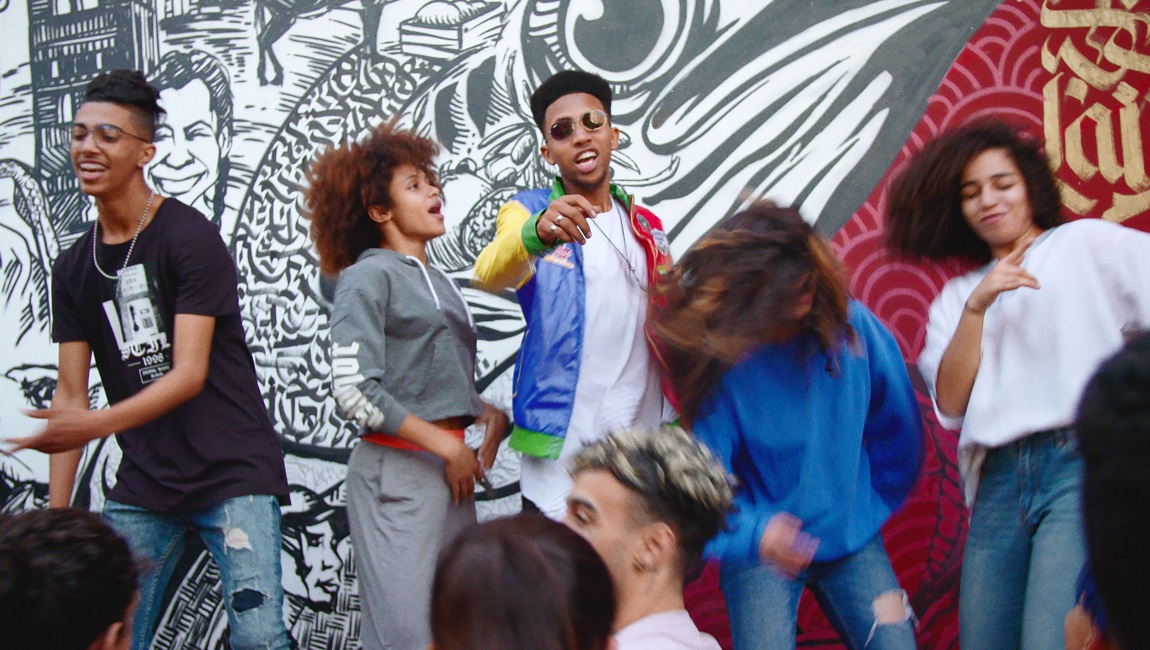Casablanca Beats boasts some technical rap prowess, but its narrative fails to develop any depth and the film suffers from a banal and maudlin ending.
Casablanca Beats was perhaps the most unexpected inclusion in the landmark Cannes 2021 competition selection. Filled to the brim with both old guard auteurs and rising stars who had made splashes with previous films as it was, Nabil Ayouch was comparatively unknown. The Moroccan director has worked steadily since 1992, and his 2015 film Much Loved attracted great controversy when it played in Directors’ Fortnight due to its forthright depiction of sex work, but he has had very little history with the festival otherwise, and little of the international recognition that even such lesser competitors like Justin Kurzel, Juho Kuosmanen, or Joachim Lafosse had.
Though likable in certain respects, this extends to Casablanca Beats itself. Filmed at an arts center that Ayouch himself co-founded in the Casablanca suburb of Sidi Moumen, known as an impoverished area of the city with a strong contingent of Muslim fundamentalism, it follows a class of young teens cultivating their interest in rap under the watch of their new teacher, Anas (rapper Anas Basbousi; every character shares their name with the actor portraying them), moving over the course of what seems to be a few months.
At the onset of the film, Anas seems to be the firm center of gravity: Casablanca Beats begins with him driving into Sidi Moumen in the car that he appears to live out of during the course of the year, and the first session plunges both him and the viewer into a classroom of entirely unfamiliar faces, previously seen in a dance class just prior. He then lectures about the reason for hip hop’s creation and its enablement of both Afro-American culture — including a clanking mention of Barack Obama — and the 2011 Tunisian Revolution.
As the film progresses, however, and after a confrontational scene where he tears into his new pupils’ first attempts at braggadocio, the steely-eyed Anas fades into the background, with no apparent reason for the change in his demeanor, as students successively take the spotlight. Typically, this is signaled by a walk home that one of them takes, introducing a particular family dynamic: a cautious Muslim radical, a fairly dreary family life, some kind of girls’ shelter with contentious relationships.
Yet Casablanca Beats never truly develops as either an examination of rap or as a wider portrait of these people united in an attempt to disrupt the conservative culture. Some scenes do encourage a more politicized view past the evocations of personal struggle that the students’ raps uniformly center upon: a conversation about the 2003 and 2007 Casablanca suicide bombings, whose perpetrators came from Sidi Moumen; a debate about how women should dress and walk in public (notably, one of the young women appears to wear a hijab to bed, which brings to mind Kiarostami’s resistance to filming domestic spaces due to this ludicrous state of affairs). But these debates rarely feel connected to the actual raps, and the resolution of the film, a concert besieged by angry parents that leads to Anas’ firing without any protest from him, followed by a sentimental rap from the students as he drives away, takes the most banal avenue possible.
Casablanca Beats comes most alive in its scenes of actual rap; everyone here is in genuine possession of a nice flow that consciously develops over the film, a growing confidence that attempts to paper over a lot of gaps that Ayouch seems to have neglected. In a few sequences that appear to be imagined, including a performance and a dance-off with Muslim men, Ayouch’s style, which opts exclusively for vague handheld close-ups, takes flight. Such moments of dynamism don’t last though, and the narrative beats unfortunately never truly come alive in any similar way.







